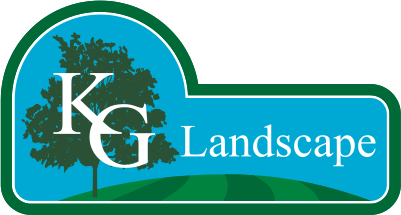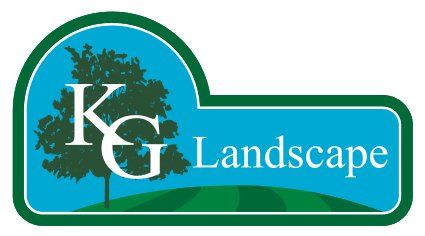Retaining Wall Design & Construction
Expertly Designed & Built Walls
Based on your project goals and aesthetic preferences, we'll help you design and install a retaining wall that fits perfectly with the form and function you're looking for.
We've been designing and building retaining walls for over 20 years. We will make sure that your new retaining wall stands the test of time both visually and structurally.
Retaining Walls - Overview
Retaining walls are used to reduce or eliminate slope in the landscape and prevent soil erosion. Well-designed retaining walls can turn hills into functional outdoor areas, like flat lawn spaces, terraced garden beds or even a hillside patio area. In addition to the utility of retaining walls, they can provide tremendous aesthetic value as well.
From allowing a fire pit or swimming pool to be built into a hilly yard, to simply preventing mulch or rock from washing onto your sidewalk, retaining walls are the most versatile tool we have to transform sloped land into useable outdoor space.
At KG landscape, we build retaining walls that last. Correctly installing the compacted gravel and fabric underlayment below the wall, using the right block for the job and incorporating a retaining wall
drainage system that allows water to move through and around the wall, are all essential factors that will increase the lifespan of a retaining wall.
Selecting the Right Retaining Wall for You
For some landscape designs, a retaining wall can be the backbone of your landscape plan. Landscaping walls can intentionally define spaces, provide year round interest and pull the colors / textures from your home down into the landscaping. When done well, these factors combine to compliment the intended look and feel of your home and give your property a true sense of place.
Other times, a retaining wall might serve a purely functional purpose and be more or less out of site. The 6 factors outlined below, can help you decide which wall material and construction method will best suite your project needs:
- Wall type - material options like natural stone, segmental cement retaining wall blocks, boulders, etc.
- Function - a highly visible and decorative wall or a purely functional wall mostly out of sight?
- Design style - curved vs. linear, formal, symmetric, modern, contemporary, traditional, rustic, etc.
- Size and strength - how tall must it be? What is the wall supporting above (e.g. a patio, a pool deck or driveway)
- Drainage factors - how much water will run behind, through and in front of the wall?
- Budget - costs range depending on material and construction details

Types of Retaining Walls - Options & Ideas
Interlocking / Segmental Block Retaining Walls
Interlocking cement blocks (ICB) blocks are the most common type of retaining wall block material used for residential applications. Interlocking retaining wall blocks rest on top of each other, held in place by a ledge or lip that's cast into the block shape at bottom edge, or a pin and groove system that holds the blocks in place, while still allowing for some flexibility between blocks.
These walls are built atop a compacted layer of crushed gravel (most commonly class 5 or class 2 gravel) and typically incorporate drainage rock, perforated pipe, drainage grates and filtration fabric behind the them to manage water moving through and around the wall.
Interlocking block walls are designed to resist / retain the force of the soil pushing up against them without the need for an expensive concrete frost footing or mortar between the blocks. It’s because of this, that interlocking walls are much more cost effective (cheaper to build) than a cider block or poured concrete structural wall that would require frost footings. Interlocking retaining wall blocks are sometimes referred to as: typical, standard, manufactured or cultured stone retaining wall block.

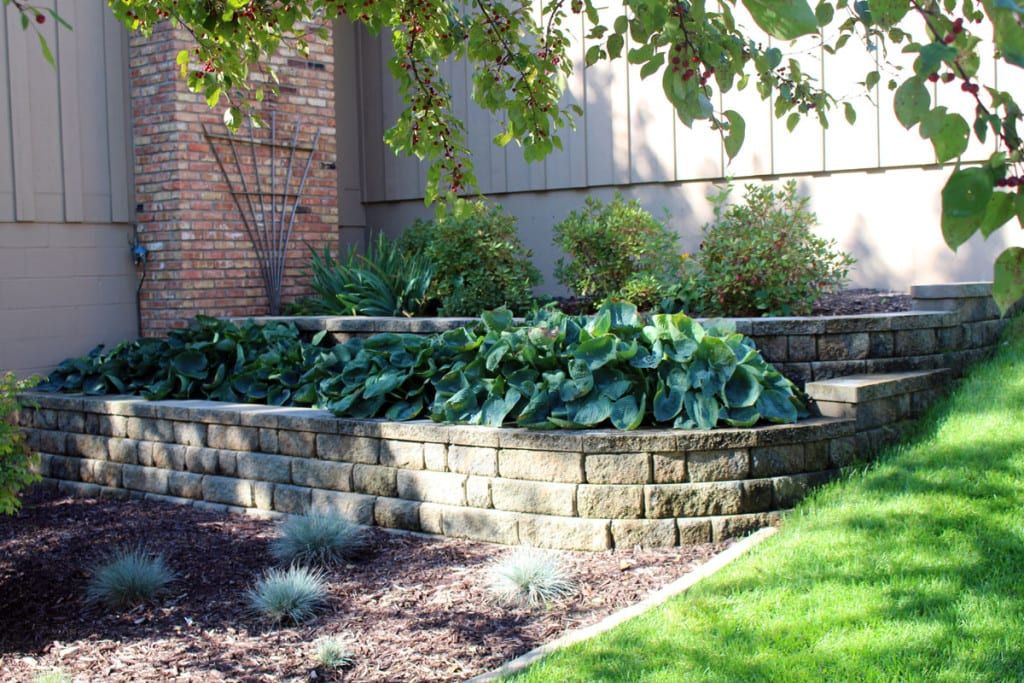
Wall Height
Most interlocking/ segmental retaining walls can be designed and built up to 4 feet tall without the need for engineering. Many segmental retaining walls can be built much higher than 4 feet tall, but exceeding the 48" will typically require geotextile / geosynthetic reinforcement plans that must be designed by an engineer to meet local structural codes and will often require a permit and city approval. For this reason, amongst others, it’s very common in residential situations to utilize a tiered retaining wall design when possible, that incorporates multiple walls at or below 48” tall on large hills or slopes, rather a single wall that exceeds 4 feet tall.
Interlocking Block Manufacturers We Commonly Use
- Belgard
- Techo-Bloc
- Rochester Concrete Products
- County Block
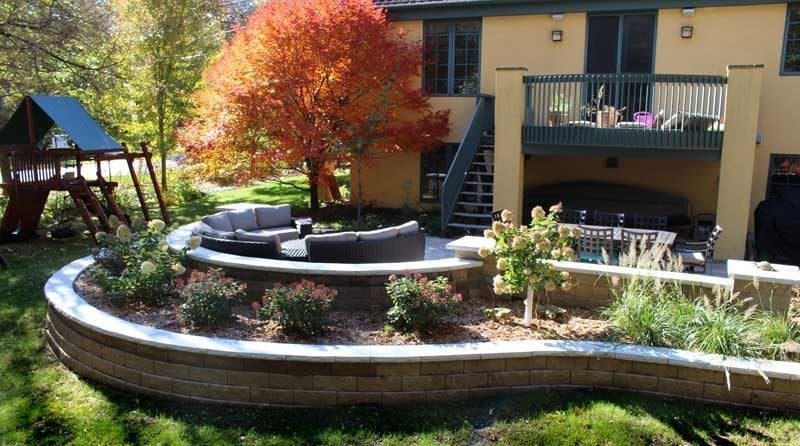
Natural Stone Block Retaining Walls
For many homeowners and designers alike, natural stone walls are considered to be the most beautiful and timeless retaining wall material there is. Natural stone walls are made using quarried chunks of sedimentary bedrock, that’s been either split or sawn into blocks.
There are a wide range of natural stone block types, colors, styles, finishes and construction methods to choose from. Our designers can help you decide which materials and methods might best fit your style and budget. Ready to get started? Set up a consult today
Natural Stone Block - Types
- Lannon - light gray limestone
- Fond du lac – light gray limestone
- Chilton - grays/tans/reds
- Winnebago - grays/tans/reds
- Rustic Gray – gray limestone
- Alder / Wolfeboro – Orijin Stone products
- Indiana limestone - gray limestone
- Mississippi bluff - tan/gold
- Bluestone - blue/gray (select and full color options)
- Highland and harvest gold – tan/gold
- Granite - dark gray and blacks
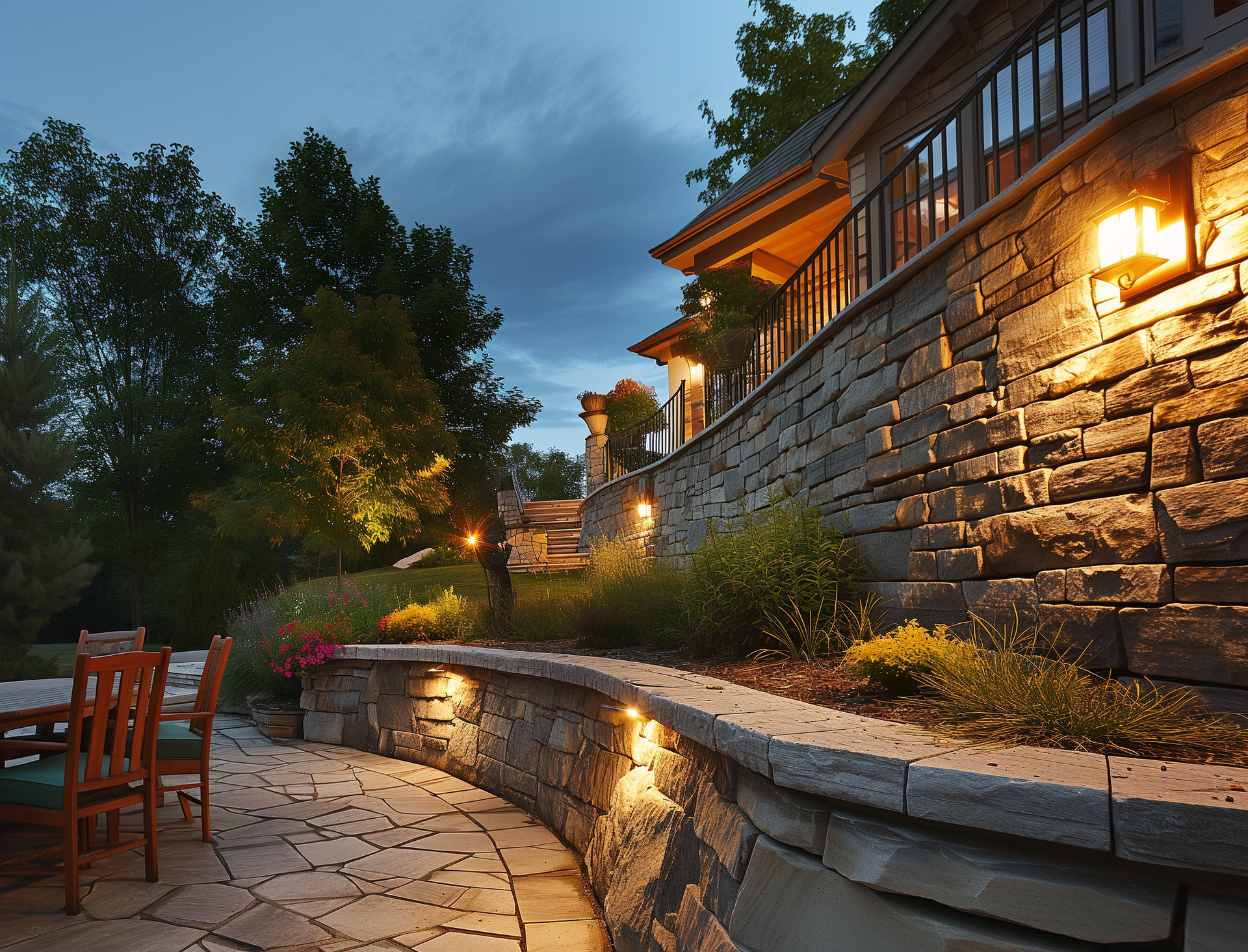
Natural Stone Block - Styles / Finishes
- Split face (aka natural cleft, bedface or rock faced)
- Honed / smooth face
- Thermal treated
- Tapestry
- Weathered edge
- Tumbled
- Sawn top and bottom
- Dry stacked
- Mortared
- veneered
- Multiple blocks sizes heights
- Mixed -multiple types of stone
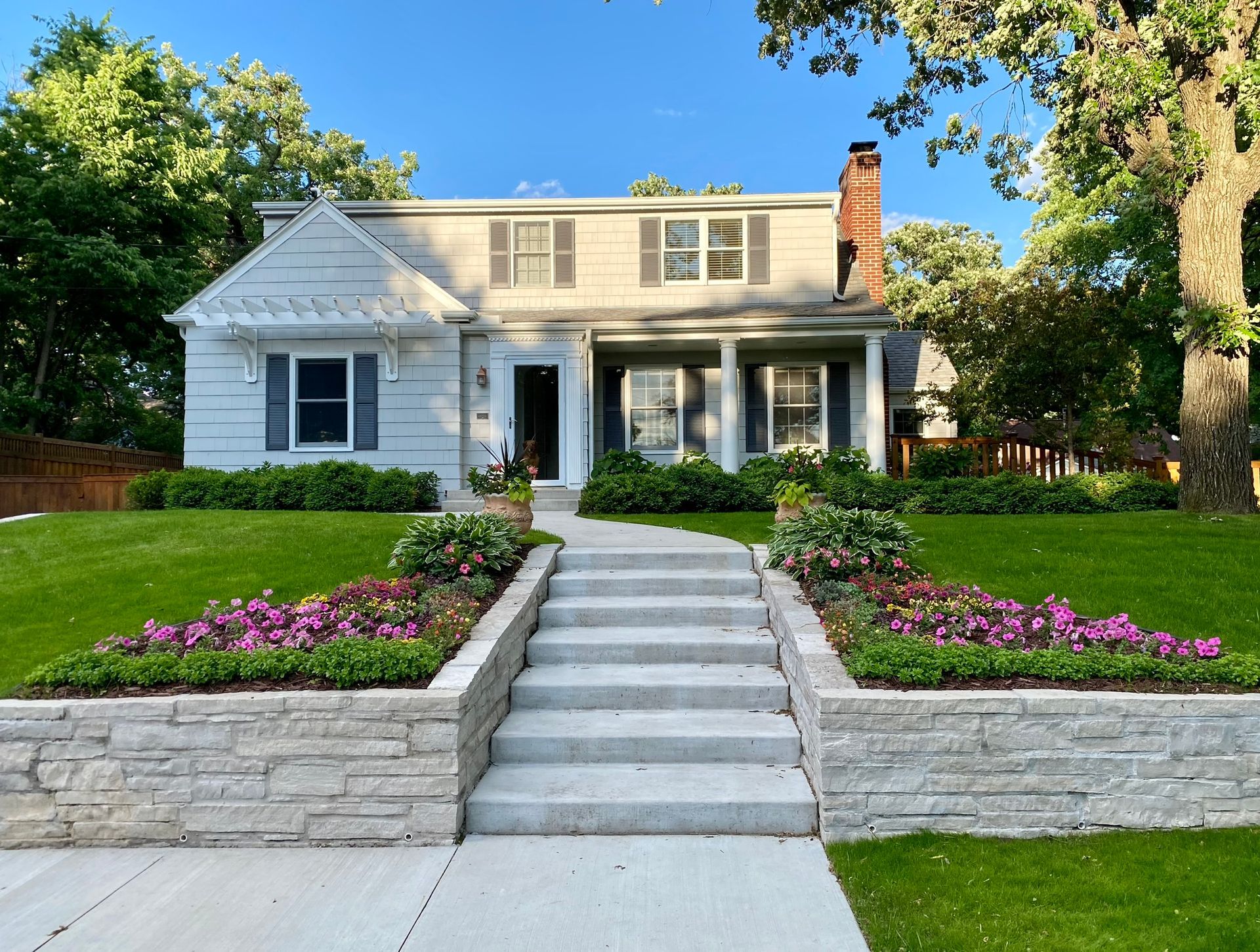
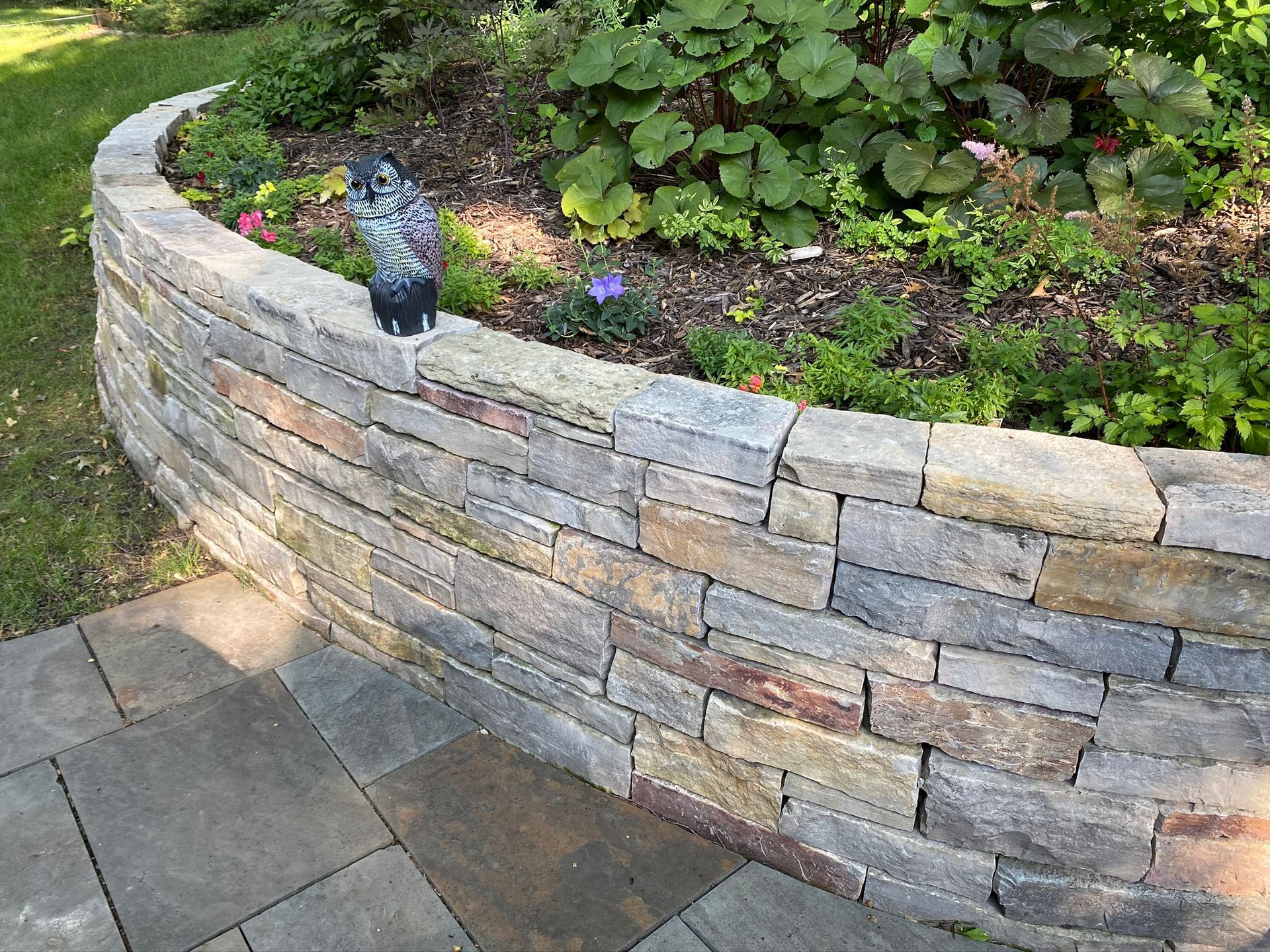
Boulder Retaining Walls
Boulder retaining walls offer a natural and rustic look that is hard to match using block walls. The 4 most common types of boulder walls used here in MN, are: glacial boulders (aka fieldstone boulders), limestone boulders, granite and sandstone boulders, all of which are native to certain regions in MN.
The goal, is that the boulders you choose look thoughtfully selected and contribute toward building a cohesive sense of place within your landscaping.
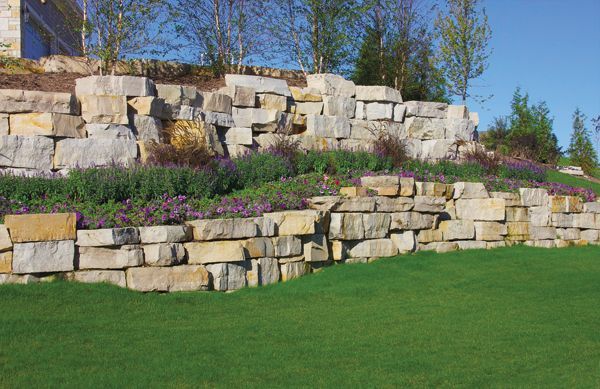
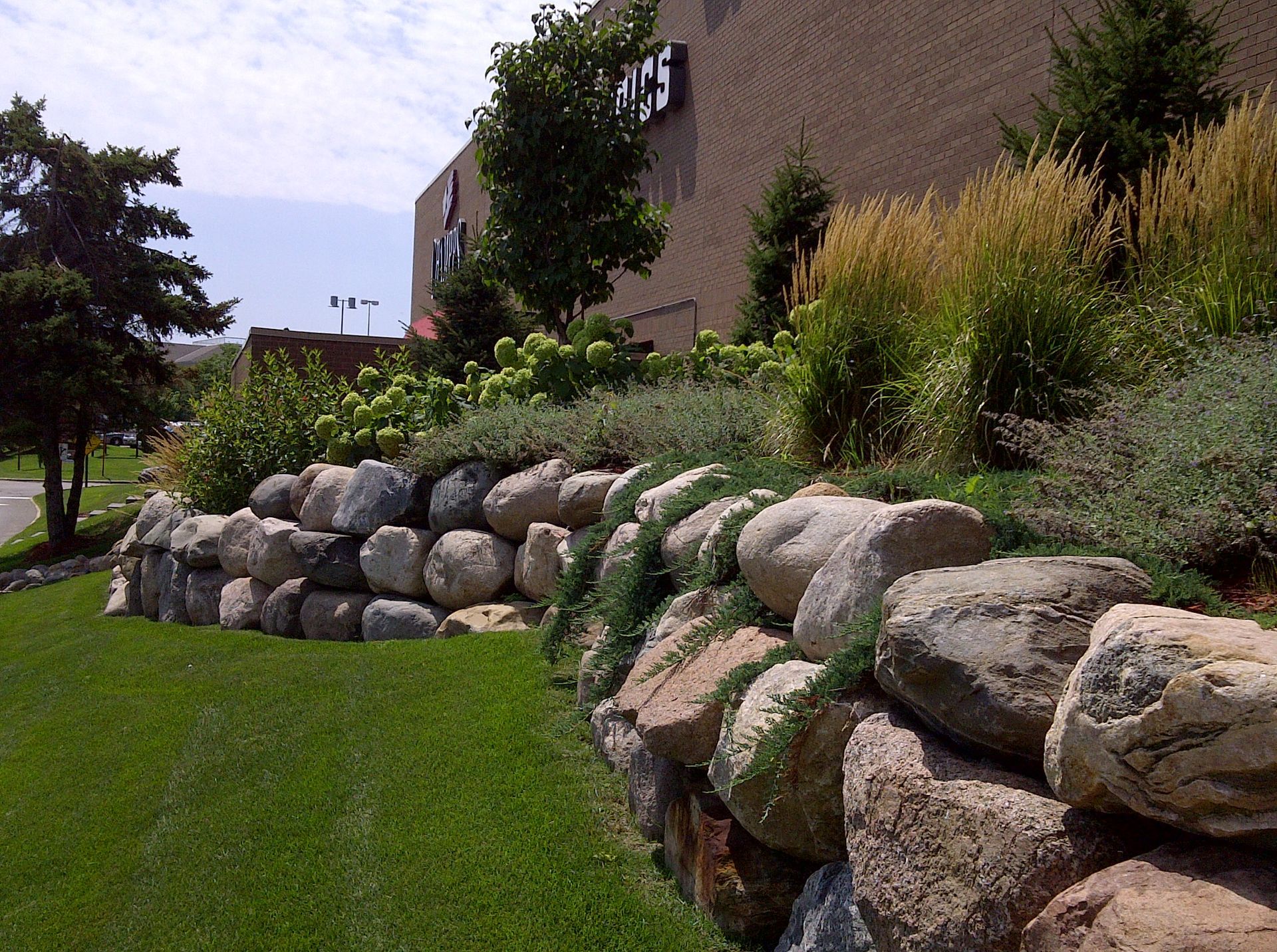
Benefits of Choosing a Boulder Wall
In addition to looking great, boulder walls have other benefits in comparison to segmental block retaining wall systems as well.
- The extreme weight of large boulders provides very effective soil retention for large hills
- Approx. weight of 24” sized glacial boulders = 500 - 800 pounds
- Approx. weight of 30” sized glacial boulders = 800 - 1,200 pounds
- Approx. weight of 36” sized glacial boulders = 1,200 - 2,000 pounds
- Boulder walls are typically built by stacking horizontal rows of large irregular stones, but they can also be constructed to follow the contour of a sloped land. Boulder walls lack the highly visible perfectly level horizontal lines created by rows of typical segmental retaining wall blocks. This attribute becomes especially helpful over the long run, because the natural slight shifting or movement in a boulder wall overtime is practically unnoticeable to the naked eye.
Boulder Outcroppings
The boulder outcropping design style is arguably the most natural looking landscaping solution for sloped yards. Unlike a typical retaining wall that reshapes a hill into flatter sections, landscaping with boulder outcroppings will leave the slope of the hill mostly unchanged. This unique design solution for hills uses a combination of large boulders, plantings and mulch to slow down water-runoff and reduce erosion.
Our goal is for the boulder outcroppings to look like they've always been there and were only exposed by the natural erosion of the land around them overtime.
To help accomplish this natural look, split or cubed boulders should always be installed horizontally; so that stratification lines in each stone appear level. When installing boulder outcroppings, it's also important to set them properly into the slope. This is done by removing soil to create a ledge or shelve for the boulders to be placed within the hillside.
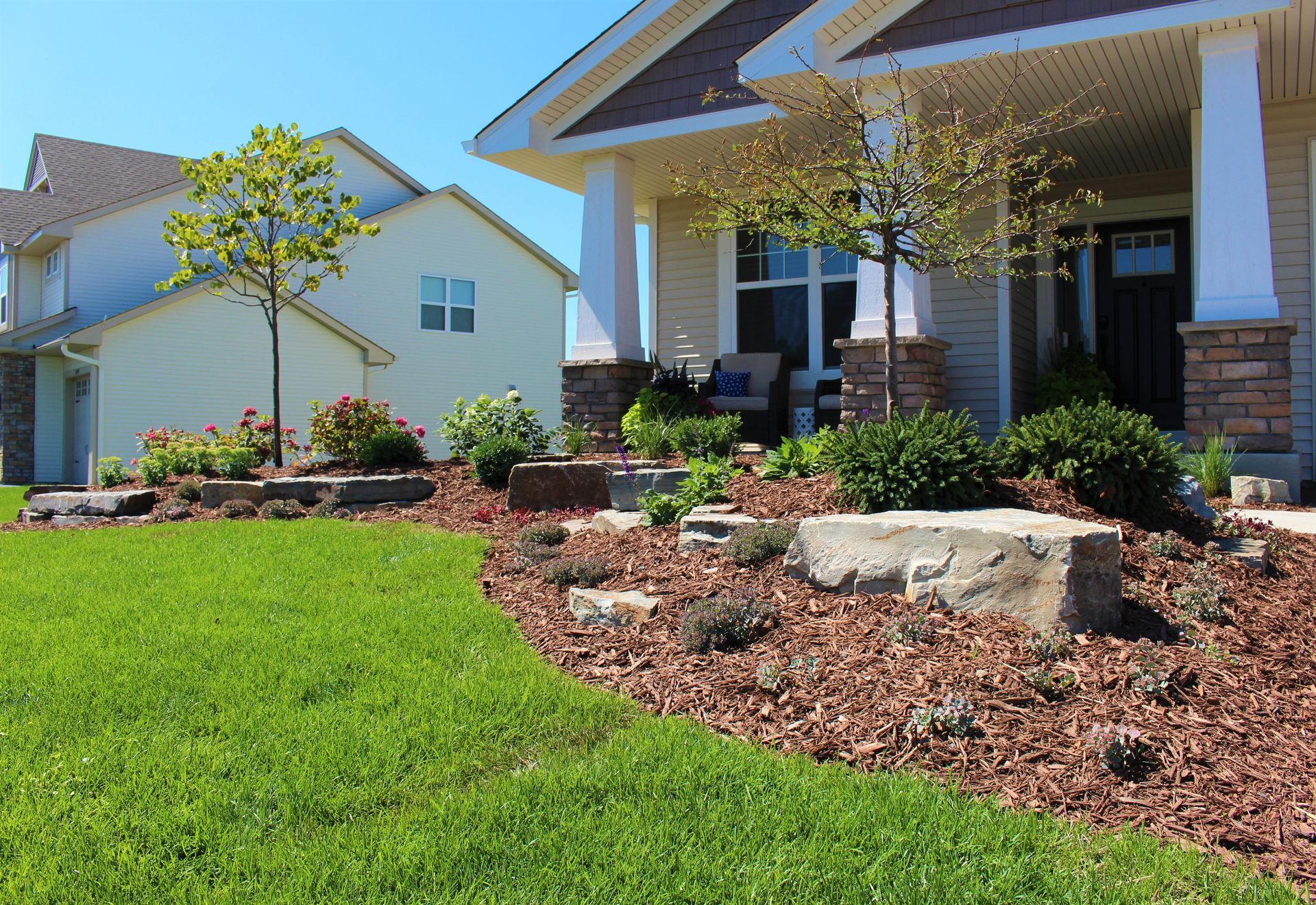
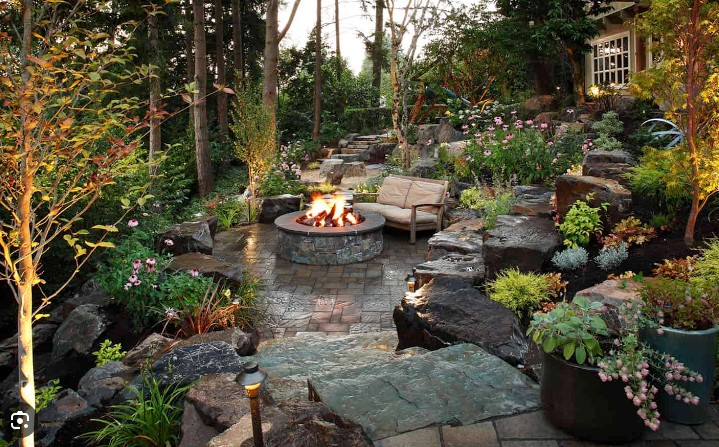
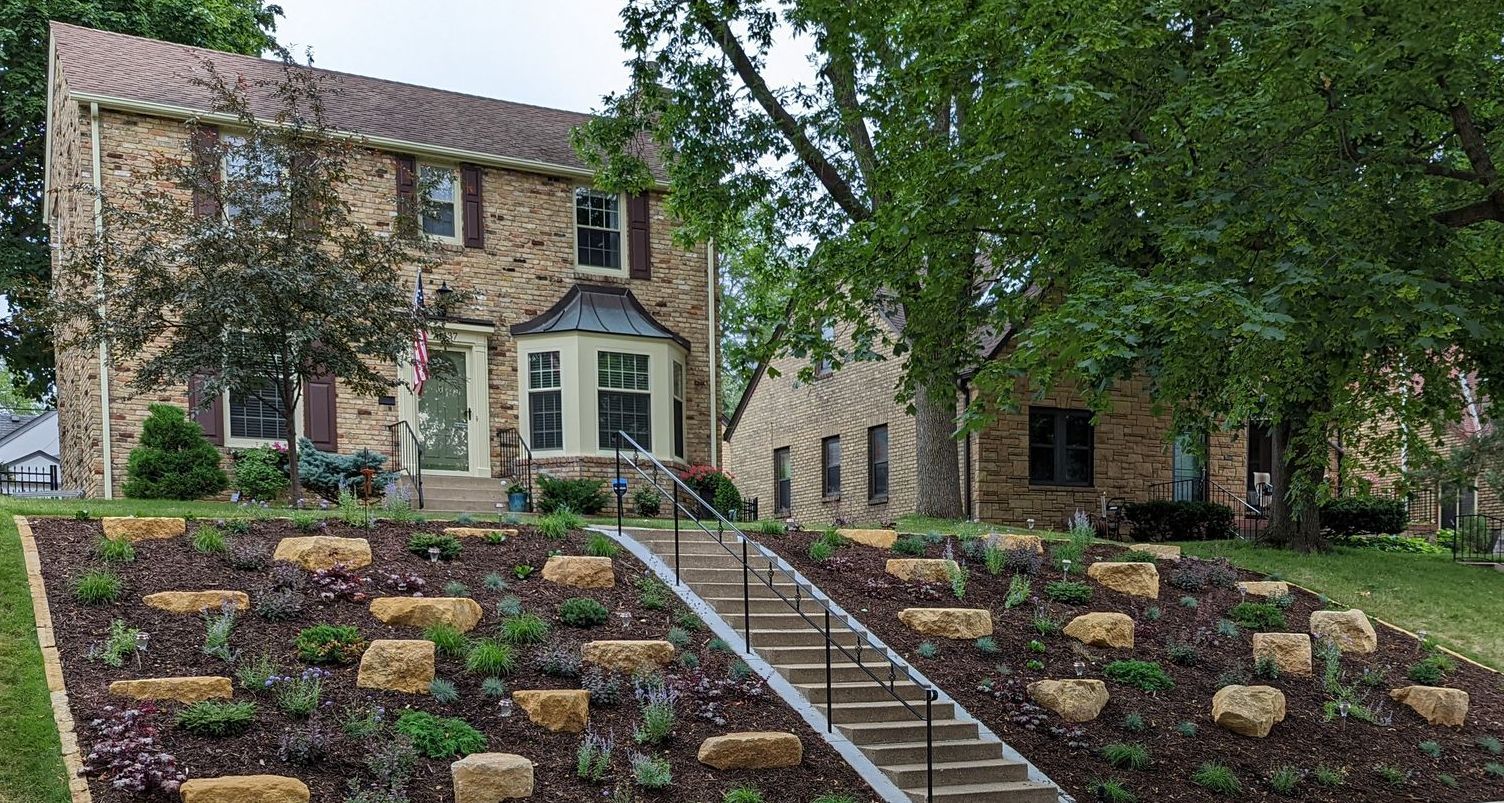
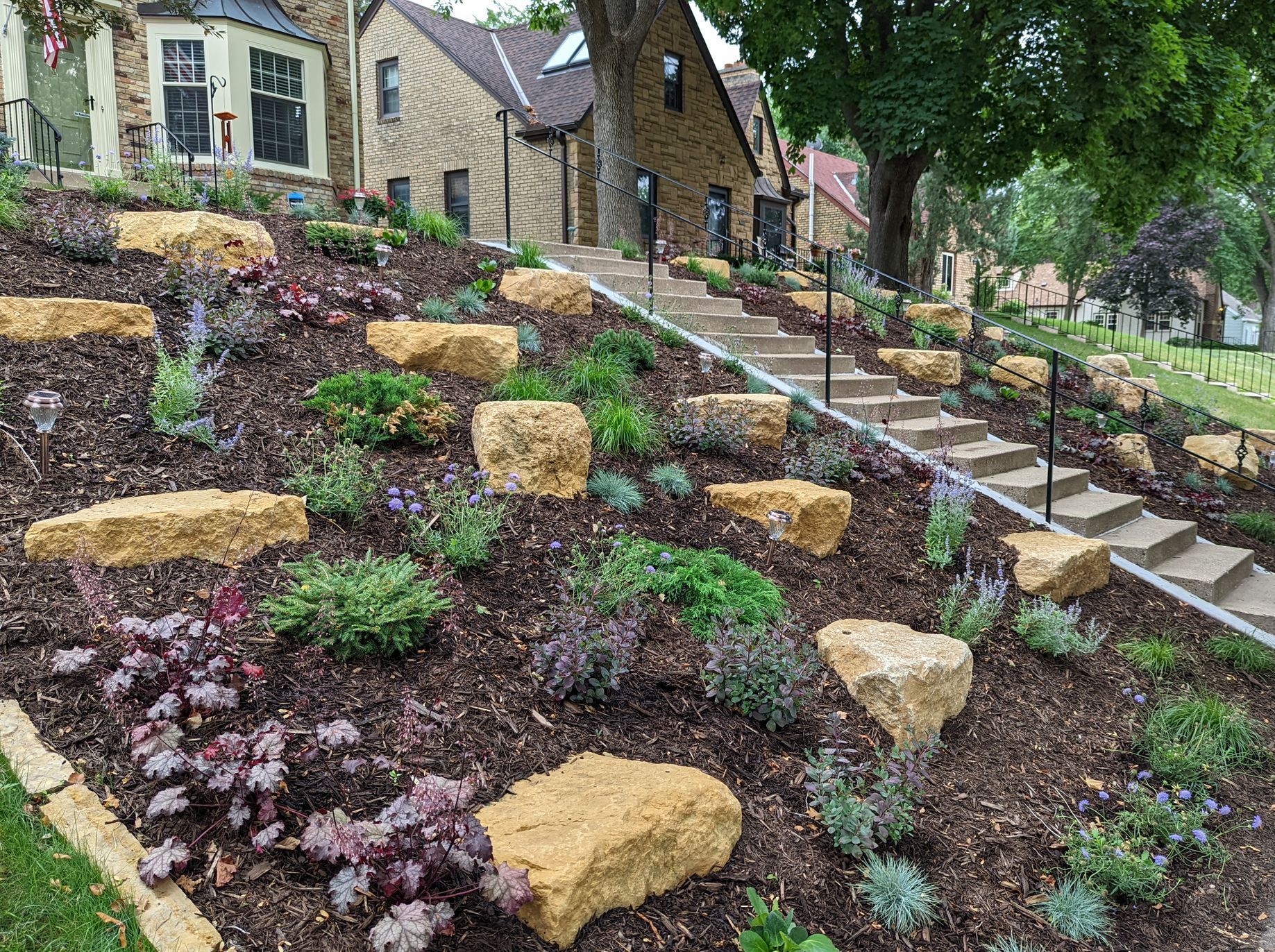
Get Started on Your Retaining Wall - Contact KG Landscape Today to Learn More
Give us a call today!
KG Landscape Management
10041 Polk Street NE
Minneapolis, MN 55434
Residential Building Contractor License #BC718597
KG Landscape Management
